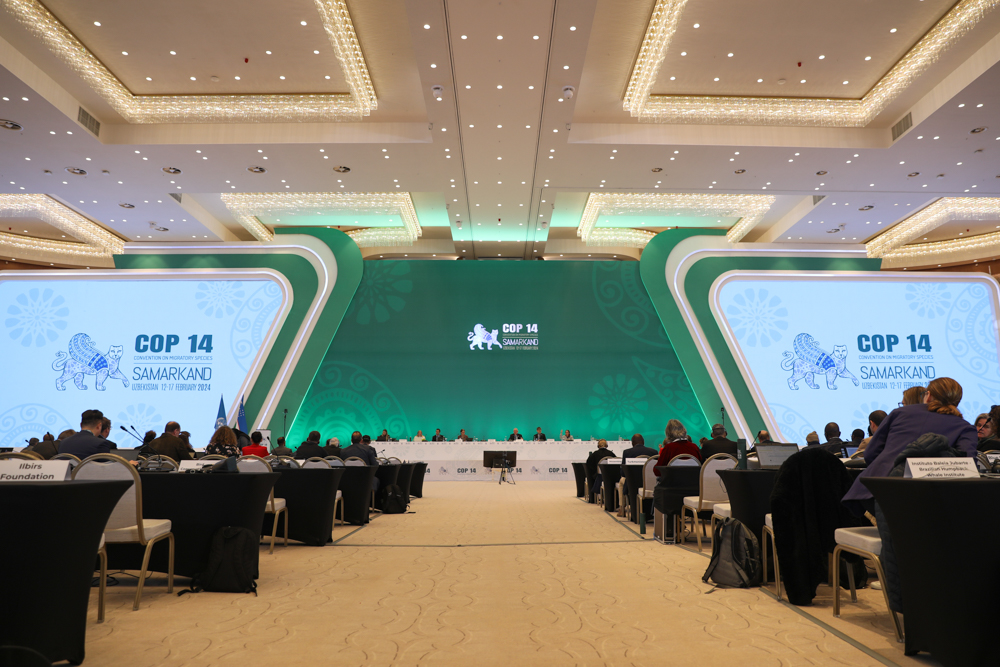
Photo by IISD/ENB | Kiara Worth
The 14th Meeting of the Conference of the Parties to the Convention on Migratory Species of Wild Animals (CMS COP14) took place last week from 11-17 February in Samarkand, Uzbekistan.
Held under the theme “Nature knows no borders” the Conference marked the first CMS COP since the COVID-19 pandemic, with Parties convening for the week-long meeting to discuss a number of pressing issues for migratory species
Among the major developments was the release of the inaugural CMS flagship report on the “State of the World’s Migratory Species”, reviewing the conservation status of migratory species and the relative impacts of various threats.
Among the findings was the identification of overexploitation as one of the key threats to migratory species today.
Overexploitation is defined as unsustainable or illegal taking, which was found to be most common in areas affected by political instability or poverty.
To combat this, CMS have proposed a multi-faceted approach that ranges from community awareness-raising projects to national legislation and coordinated international action.
Other major talking points at the Conference included strategies to implement the Kunming-Montreal Global Biodiversity Framework, ways to strengthen synergies with other biodiversity-related conventions and processes, as well as the new CMS Strategic Plan for Migratory Species for the period 2024-2032.
Within the framework of COP14, CIC Director General Sebastian Winkler held bi-lateral meetings with environmental and wildlife Ministers from different countries across the region, including Kazakhstan, Kyrgyzstan, and Tajikistan.
In particular, talks focused on possible areas of collaboration with the CIC through Memorandums of Understanding, CIC State Membership, and areas of work through Nature for Health (N4H) similar to the ongoing One Health initiative in Mongolia.
On CIC State Membership in particular, talks were positive and it is possible that we will see a new Central Asian CIC State Member in the near future.
